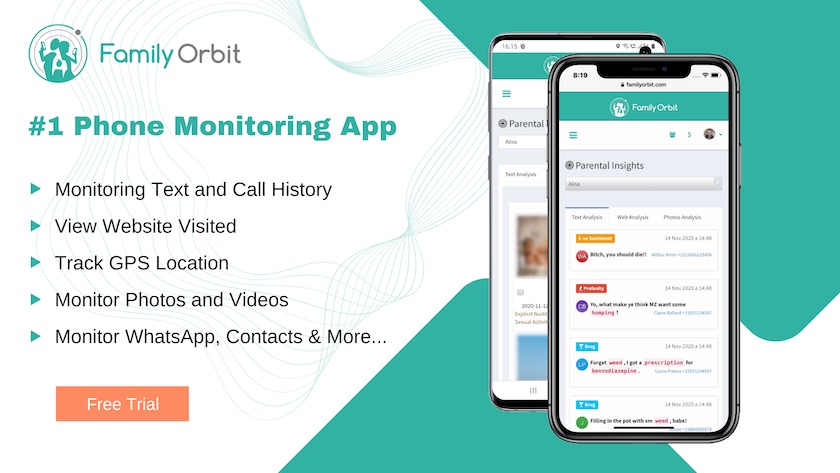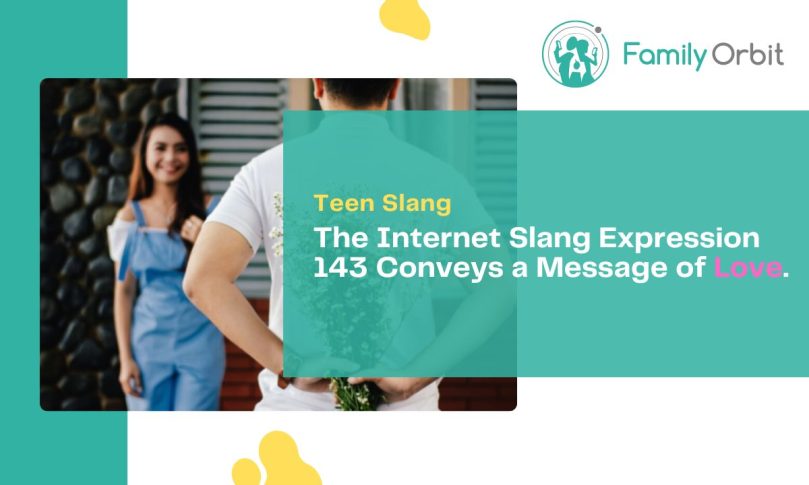The expression “143” holds a deep emotional significance. It is used as an affectionate way to sign off messages and can be used for both youthful affection and something more serious.
This leads us to the question of what does 143 mean? Of all of the abbreviations out there, this is perhaps the sweetest. Let’s look at exactly what it means and how it’s used. Let’s get started!
143 Meaning: Unveiling the Hidden Affection
The expression “143” holds a deep emotional significance. The numerical code can quickly be translated as “I Love You”. This is simply a reflection on how many letters are used in each of the words. 1 for ‘I’, 4 for ‘Love’, and 3 for ‘You’.
This is why you’ll often see this at the end of messages as an affectionate way to sign off. Of course, depending on their age, this can be a cute mark of youthful affection or something more serious. Let’s look more in detail at how it’s used.
How is 143 Used? Exploring Various Contexts and Examples

The usage of “143” can vary from one person to another. While your mind may immediately jump to romantic love, it may not be that deep. The use can extend to friendships or family, or they may even use it as a joke.
Friends – It’s common for young friends to say that they love each other. Using “143” would be a cute way to do it. “Thanks for helping me study tonight 143” is an example of how it can be used in this regard.
Family – In the same way, “143” may be used for family too. Children can sometimes find it hard to express emotions, so using an abbreviation can be their way of letting you know how they feel.
Love Interest – Of course, the most commonly associated use of this term would be an interest. They could be using “143” as a secret code for snooping parents or perhaps because they’re a little shy about actually typing out the words.
These are the three main scenarios where the code is most likely to be used. Let’s look at some examples of how and when it may be used in a message.
Casual Text Message – “Hey, hope you’re having a great day! Just wanted to remind you, 143.”
Sweet Note to a Partner – “Leaving for school. Before you wake up, I wanted you to know that I’m thinking of you. 143, always.”
Friendship Affection – “Thanks for always being there, even when I’m at my weirdest. You’re the best, 143!”
Subtle Flirting – “Your smile lights up the room. Just had to tell you, 143.”
Sibling Bond – “Can’t believe we used to fight over the TV remote! Now I realize how much I miss those days. 143, bro.”
Inspirational Message – “Life has its ups and downs, but remember, 143.”
Long-Distance Relationship – “Distance can’t change how I feel, 143.”
Gratitude to Parents – “Thank you for everything. 143, Mom and Dad.”
Spotting 143 Usage: Signs Your Child May Be Employing the Slang

As a parent, staying on top of your child’s communication is important. As is looking at the patterns of their communication, as this will give you an insight into their little world.
While their using “143” can be a positive sign that they are comfortable expressing their affection, it depends on who they are saying it to. Of course, another crucial factor is how old they are.
If your child is the type to use a lot of code in their messages, there’s a good chance they are using “143”. For most children, it’s a good idea to monitor their phones to see in what context it may be used.
Another tell-tale sign is if they start using the abbreviation in their general communication. They may say things like “143 mom” or you may overhear them talking code with their friends along the lines of “I told him 143 but he didn’t say it back”.
Finally, they may start to be more secretive about their phone or internet use. In this case, they may not have a love interest they don’t want you to know about. Here they are more likely to use code to try and hide it.
Adolescent Expression: The Motivation Behind Teens’ Use of “143”
There are many reasons why “143” is used. The most obvious one is privacy. They are saying something personal and don’t want their parents or anyone else to know they are making an expression of love.
However, as adolescents, it could just be them experimenting with language. They are exploring their identity, and this is a part of it. Another reason could be that they are just jumping on social trends as “143” is something their friends use.
It’s also possible that “143” is for efficiency in communication as it takes up less space and time than “I Love You”. This, of course, is less likely these days as we no longer need to pay for longer text messages, but it’s still feasible.
Other potential motivations could be playfulness, nostalgia, or conflict avoidance. While privacy is probably the most likely reason, it’s important not to jump to conclusions.
Beyond “143”: Other Common Abbreviations for Parents to Understand

Are there any other similar abbreviations similar to “143” that you need to be concerned about? Here are some others that may be related to love or relationships, and can be huge red flags.
DTP (Define the Relationship) – Used when someone wants to talk about the status of a relationship.
FWB (Friends with Benefits) – A relationship where friends engage in sexual relations without commitment.
S/O (Significant Other) – Referring to someone’s partner.
PDA (Public Display of Affection) – Used to describe overt displays of physical affection in public.
LDR (Long-Distance Relationship) – For those who are geographically separated.
CU46 (See You for Sex) – Self-explanatory and a huge red flag.
IWSN (I Want Sex Now) – A desire for sexual activity.
DTF (Down To Fu**) – Usually phrased as a question to gauge willingness for sexual activity
TDTM (Talk Dirty to Me) – Used to suggest or invite sexual conversation.
GNOC (Get Naked on Camera) – A request for an intimate webcam or video call chat.
9 (Parent Watching) – Often used so the other person stops inappropriate chat.
LMIRL or MIRL (Let’s Meet in Real Life) – Code for wanting to take their online chat offline.
Parental Concerns: Unveiling the Reasons Behind Teens’ Code Words
Parents might wonder why their children resort to using code words and abbreviations in their communication. It’s important to understand the context of the messages and where the behavior is coming from.
Many times, these code words are just harmless fun. Other times, further investigation may be required. If they are using it along with other code words like the ones above, then you may need to take action to stop the communication.
Monitoring Your Child’s Text Messages with Family Orbit

As a parent, it is important to strike the right balance between respecting your child’s privacy and ensuring their safety. One of the best ways to do that is with a monitoring tool like Family Orbit.
Family Orbit is a comprehensive parental control app that allows you to track your child’s online activity, including text messages. If you think your child is using code, a control app can be the perfect way to ensure that it’s nothing sinister.
While you may be worried about not giving them privacy, it’s easier than ever for perverse people to target youngsters online. It’s better to be overly cautious rather than take any risks.
- Monitor Calls & Text Messages
- View Photos and Videos
- Location Tracking & Geofence
- Monitor WhatsApp & Kik
- Detect & Alert for Inappropriate Activities
- Monitor Websites Visited
- Compatible with Android and iOS

